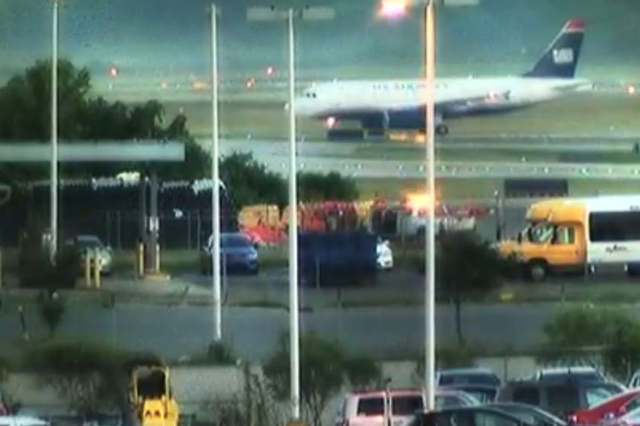Passenger jet takes out runway lights on rough landing
WASHINGTON — For a minute, Christine Malloy was very worried. As a frequent flier, she was used to rough landings once in a while. But Malloy could tell this landing was different.
"Within seconds, the plane dropped to the ground," she told CNN on Wednesday. "And it dropped really hard."
Malloy was one of 159 passengers and crew aboard American Airlines/US Airways Flight 1851 flying Saturday from Atlanta to North Carolina's Charlotte Douglas International Airport.
As the Airbus A321 nearly touched down on the runway, the jetliner hit several runway lights, according to the FAA.
"I remember just thinking, this is it." she said. "I tightened my seat belt and I just grabbed on to the seat really hard."
"Things were really chaotic," she said. "We had people screaming. There were things kind of flying around in the air."
Malloy and a fellow passenger comforted each other for a brief moment.
"We put our hands through the seat and we held hands," she remembered. "I just said a prayer and held on really tight."
Then Malloy said she could feel the plane gain altitude as the pilot aborted the landing.
She wondered, "What's going on here, right? Is it the weather? Is it the pilot?"
Minutes later, the plane landed safely on its second try. No injuries were reported, American Airlines the parent company of US Airways, said in a statement to CNN.
The flight crew was performing what's called a "go-around," lining up the aircraft for another landing.
Go-arounds are standard safety procedures that pilots use during approach when airliners aren't lined up properly for landing. They abort the landing and "go around" to set up for another attempt.
The flight crew blamed wind shear for the aborted landing, according to the FAA. Wind shear is a weather phenomenon that results in a sudden downward burst of wind just before landing.
Since 1943, 87 airline, military and business jet incidents have been blamed on wind shear and downdrafts, according to Aviation Week and the Flight Safety Foundation.
In the 1970s and '80s, deadly wind shear crashes led to better flight training and robust radar technology that have helped pilots avoid this dangerous weather phenomenon.
The FAA and National Transportation Safety Board are investigating Saturday's incident and are examining weather conditions, in addition to the airliner's cockpit voice recorder and flight data recorder.
The airline said the captain discovered damage to the underside of the aircraft. Workers found debris and damaged lights on the runway, according to the FAA, prompting the temporary closure of the runway.
The plane has been taken out of service, the airline said.






















